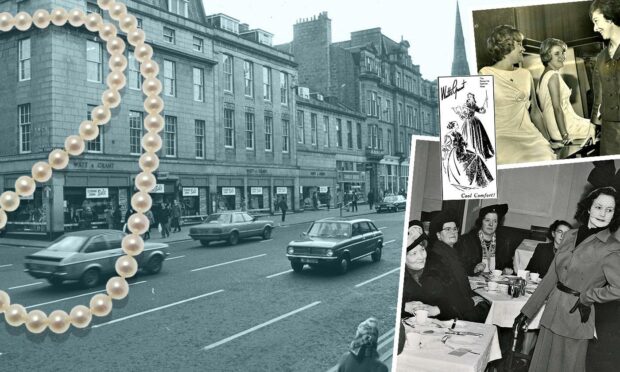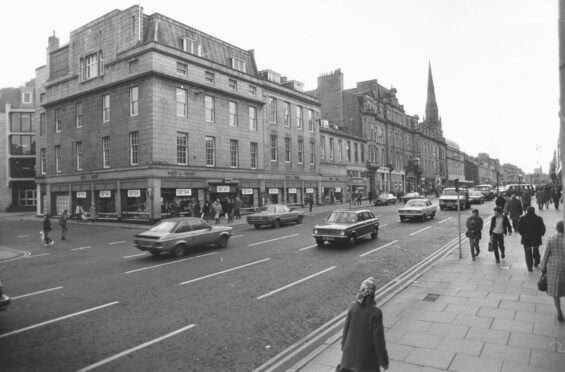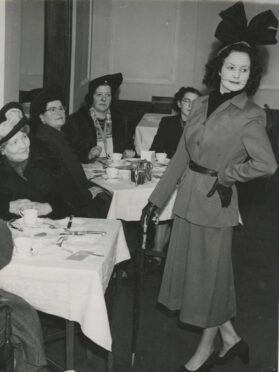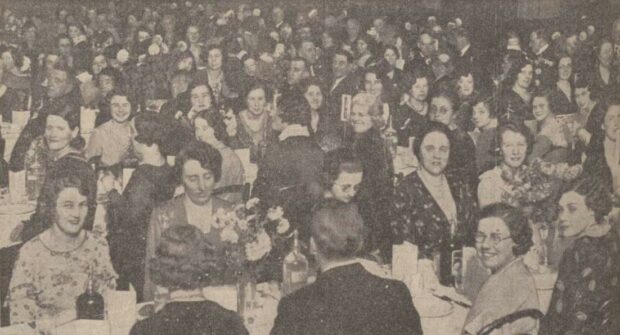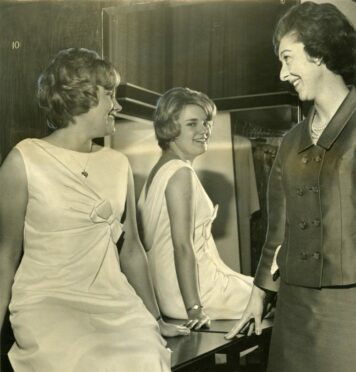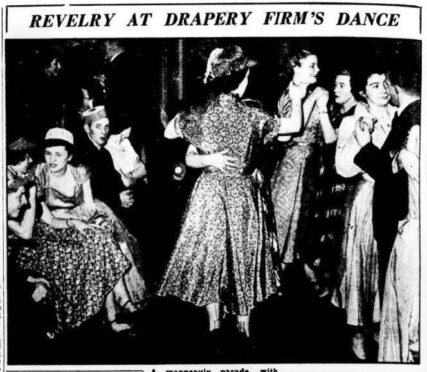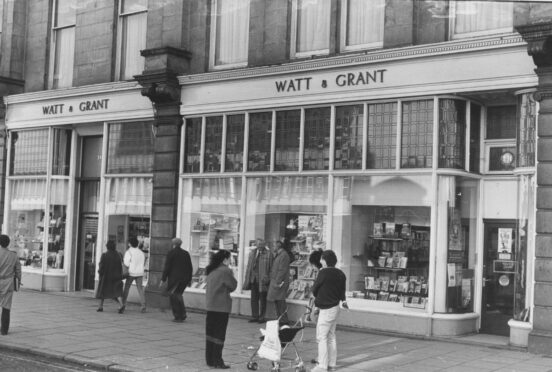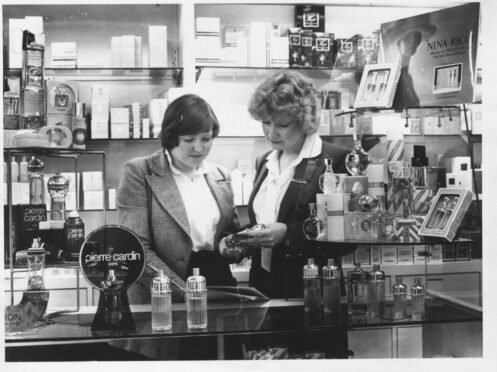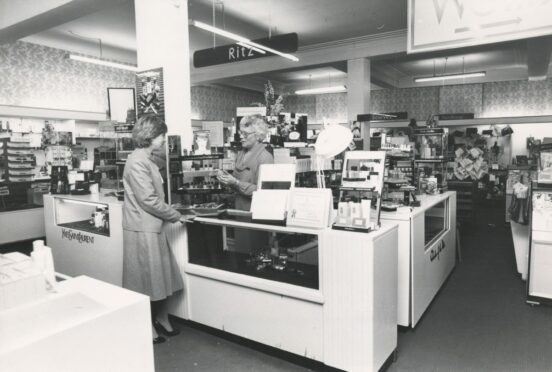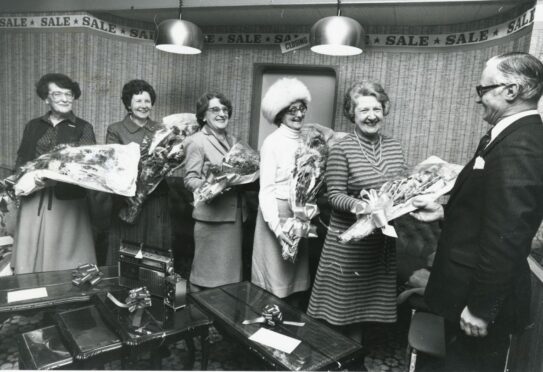A sad farewell was bid to “the grande dame of Union Street” 40 years ago when upmarket Aberdeen department store Watt and Grant closed down.
Watt and Grant opened its doors in an expansive and handsome building on the corner of Dee Street and Union Street in 1882.
It was an expensive and exclusive drapery, providing the very finest clothing and wares to well-heeled Victorian Aberdonians.
But the once beautiful shop succumbed to changing high street trends and unable to compete with the lure of shopping malls, closed in November 1981 – just a year shy of its centenary.
Humble beginnings
Watt and Grant started life as a modest silk mercers, glovers and outfitters – the original Alexander Watt and John Grant risking all their capital to open the shop.
But it was said with the duo’s “honest dealing and hard work the venture could not fail to be a success”.
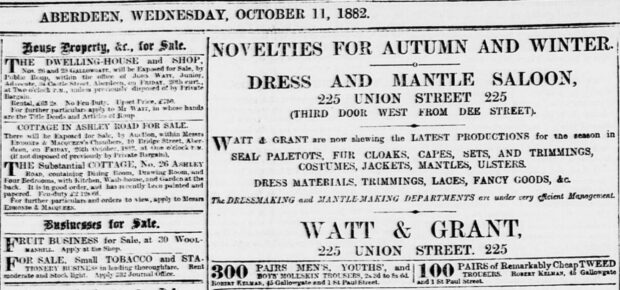
It didn’t take long for Watt and Grant to become a popular shopping destination and restaurant, bringing the latest London trends to the north-east.
And they were trailblazers in the city when they employed a female assistant for the “fancy counter” at a time when Aberdeen shops were almost always staffed by men.
On a weekly basis, the advertising columns of the Press and Journal and Evening Express groaned under Watt and Grant adverts boasting stock of curtains and upholstery in the finest chenille, damask and silk fabrics.
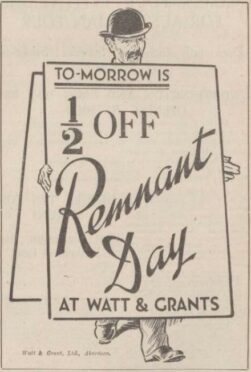
Before long, it was sole supplier in Aberdeen of the prestigious and fashionable Liberty of London fabrics – a firm at the forefront of the Arts and Crafts movement.
Watt and Grant’s success grew quickly and attracted a wide patronage, not just in the city but in the district too.
The firm said its success was due to exquisite customer service, which was “something so precious that its value could not be measured in pounds, shilling and pence”.
And by the 1890s it was billing itself as Aberdeen’s “fancy” department store bringing global goods to the Granite City.
It sold cashmere stockings from 1 shilling a pair, hand-stitched Japanese silk hankies at 11.5p each, corsets, Irish linen, English lavender water, charming silk blouses and ladies’ tennis shoes.
In the Mantel Department, customers could peruse “an extensive stock of materials and trimmings for copying the Paris and London models”.
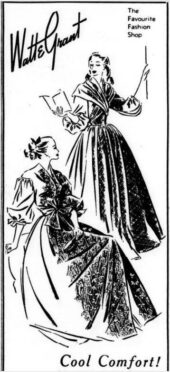
Hitting half-century milestone in 1932
Watt and Grant stormed into the 20th Century, becoming the city’s trendy shopping destination, school uniform outfitter and it also expanded into childrenswear and toys.
And the firm’s workforce had also expanded with 200 members of staff employed by its 25th anniversary in 1907.
Watt and Grant’s employees were always meticulously turned out in outfits of black dresses or suits, and for the women, accompanying black stockings and black satin shoes.
By the time it hit its half-century birthday in the 1930s, the next generation of Watts had taken over.
“Hats off to the past, coats off to the future” was the theme of the firm’s 50th anniversary celebrations in 1932 – an apt idiom for a drapers and outfitters.
The milestone was marked with a dinner dance for 250 staff and guests in the ballroom at the Music Hall on November 25.
In his speech, Mr Watt said the firm “had played a noble part in the business life of Aberdeen” and he ventured to hope that after 50 years they were “still many miles from journey’s end”.
While director Mr Brown said “faces in the store came and went, but the spirit of the house remained the same”.
There was change in 1952 when House of Fraser took over – the company’s fifth acquisition in Aberdeen – but the household name Watt and Grant remained.
As well as selling the designer trends from Paris, Watt and Grant famously hosted fashion shows across the road at the Music Hall.
In 1956, it was reported in the Press and Journal that “women gasped with delight” at the sight of the “arrow line” of Dior.
A ‘genteel jumble sale’
The 1960s saw House of Fraser acquire Wylie’s bookshop at nearby 247 Union Street, expanding Watt and Grant’s reach and offerings even more.
But by the 1960s and 70s, the face of fashion and retail had changed dramatically, and society had moved on from couture and debutante balls.
Haute couture was no longer in vogue, and traditional shops like Watt and Grant struggled to compete with the rise in ready-to-wear fast fashion and the latest trends from Swinging London.
Watt and Grant’s demise continued and in 1981, it was announced that House of Fraser was closing the store to concentrate its Aberdeen operations in its own premises on the corner of Market Street and Union Street.
It was a sad prospect for staff members, particularly the longest-serving shop ladies: Phyllis Sievwright in charge of linens, Eveline Minty in charge of millinery and Ricci Cameron in charge of underwear.
Many of the female staff joined straight from school and said it meant “entering a glamorous and exclusive little world”.
Miss Seivwright started as a door-girl in 1952 greeting well-to-do Aberdonians from their carriages or large cars before rising through the ranks head of linens.
While Miss Minty had joined the workforce in 1954 as an assistant in the hat department before being promoted to buyer.
It was a role that took her from the Granite City to the fashion shows of Paris, Milan, Florence and Geneva.
But the shop that was founded in booming Victorian Aberdeen could not survive the economic bust of 1981 long enough to mark its 100th anniversary in 1982.
Watt and Grant’s closing date was pulled forward from January 1982 to November 1981.
In the final days of its closing down sale before the hoardings went up for good, what was once “the most fashionable shopping centre in the north of Scotland” was said to be more akin to “a genteel jumble sale”.
If you liked this, you might enjoy:
